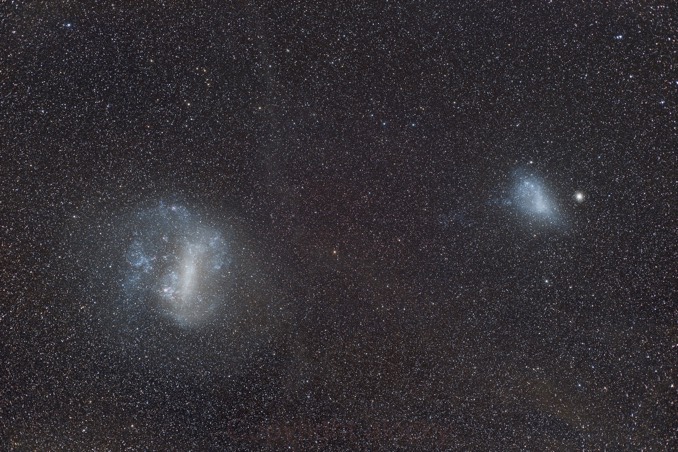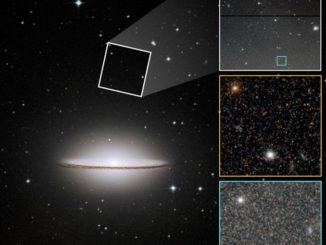
Two of the Milky Way’s most famous satellite galaxies, the Large and Small Magellanic Clouds, may have had a third companion three to five billion years ago. Computer simulations suggest the LMC may have merged with a nearby luminous galaxy.
Most stars in the Large Magellanic Cloud rotate around the centre of the galaxy in a clockwise direction. But some exhibit counter-clockwise movement leading astronomers to conclude those suns likely originated in the Small Magellanic Cloud and were captured by its larger companion.
But Benjamin Armstrong, a masters student at the International Centre for Radio Astronomy Research, or ICAR, in Australia says another possible explanation is “that these stars might have come from a merger with another galaxy in the past.”
Computer simulations of galaxy mergers show “that in this sort of merging event, you actually can get quite strong counter-rotation after a merger takes place,” he said. “This is consistent with what we see when we actually observe the galaxies.”

The findings could help explain why stars in the Large Magellanic Cloud tend to be either very old or very young. Astronomers call the discrepancy the age-gap problem.
“Star clusters contain many, many, many stars that are all of quite similar ages and made in similar environments,” Armstrong said. “In the Milky Way, the star clusters are all very old. But in the Large Magellanic Cloud, we have very old clusters as well as ones that are very young but nothing in between.”
The presence of young clusters indicates renewed star formation, a possible indicator of a galactic merger.
Armstrong’s study of the merger scenario was published in the Monthly Notices of the Royal Astronomical Society.



